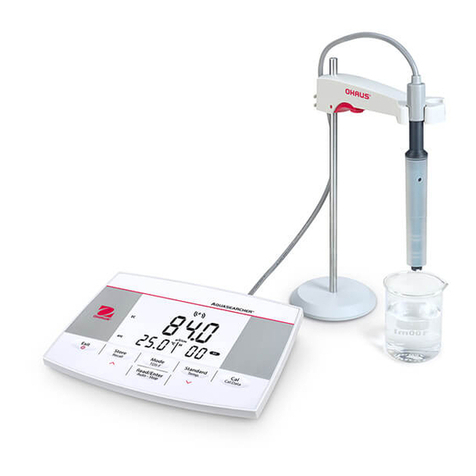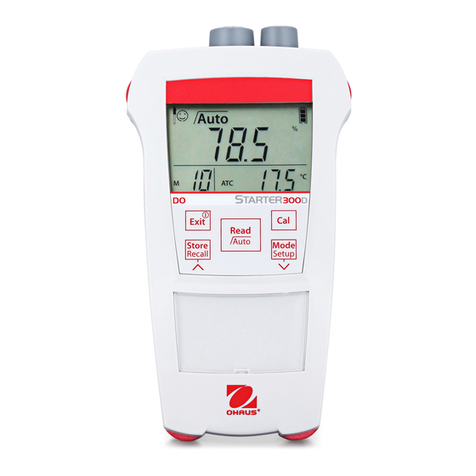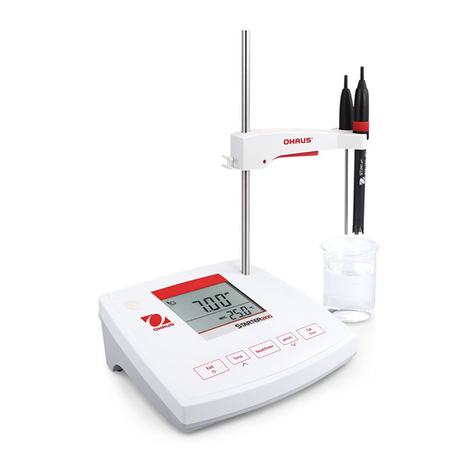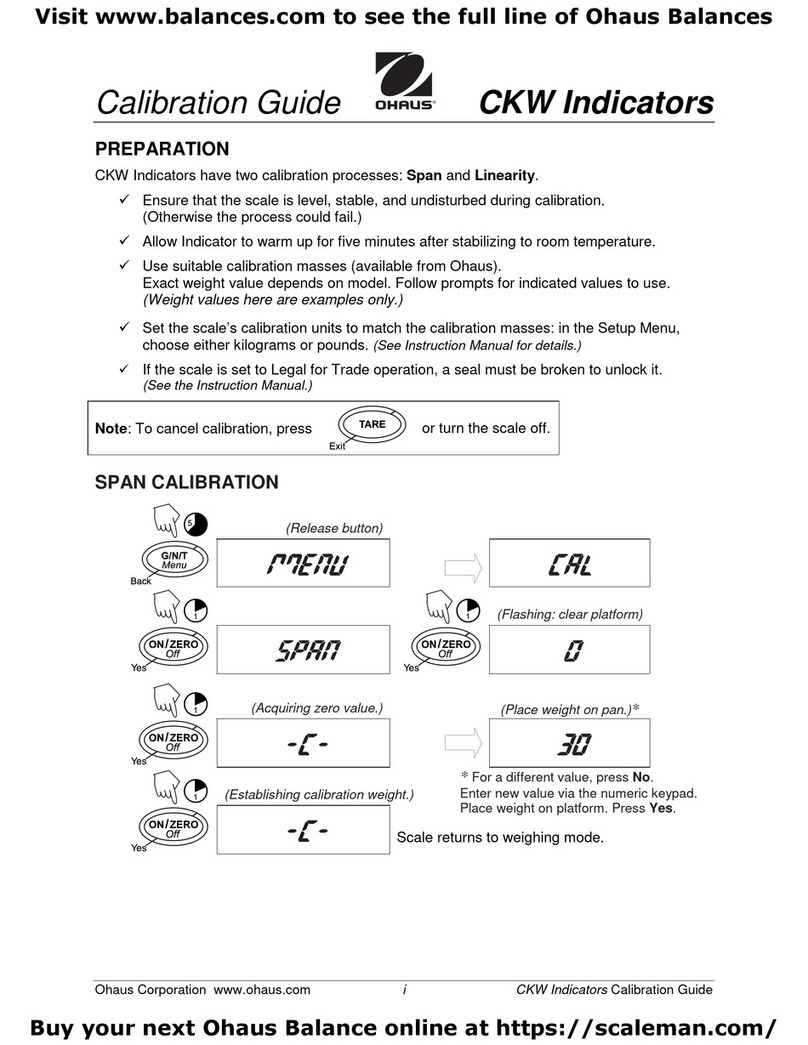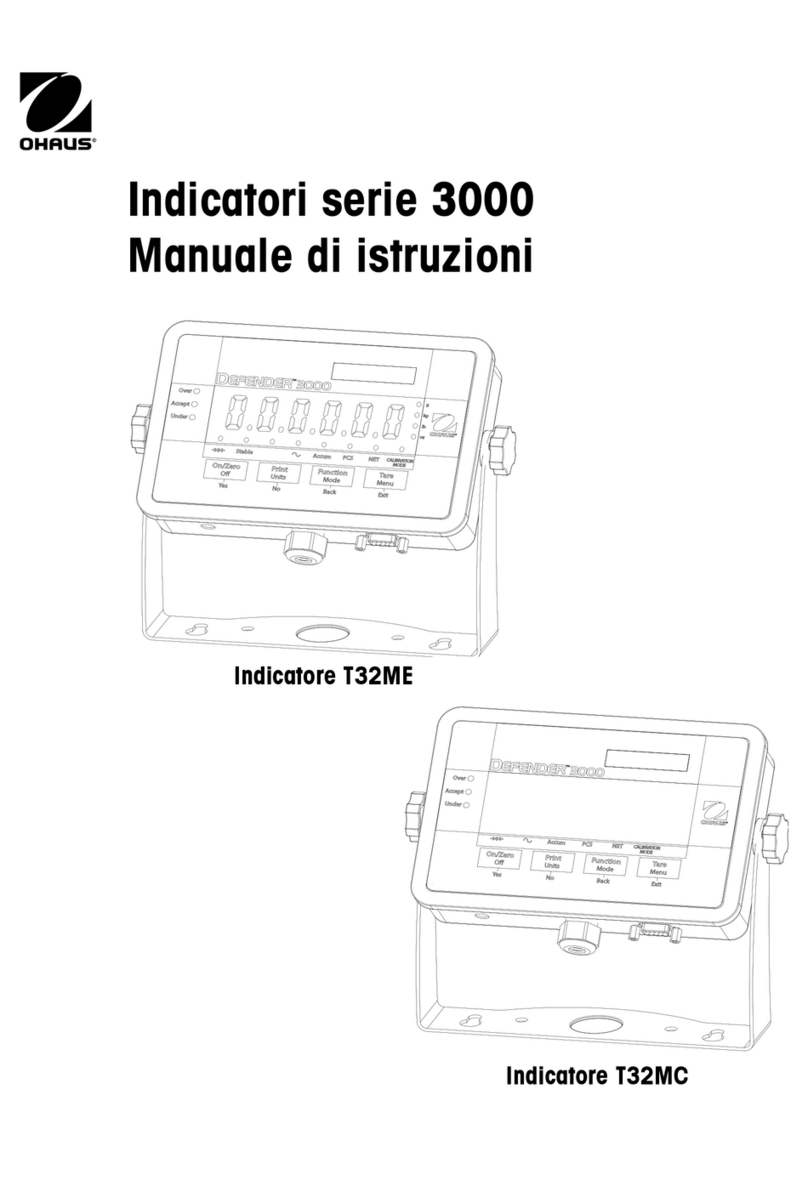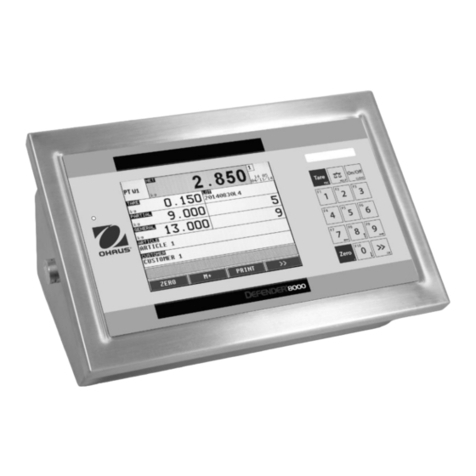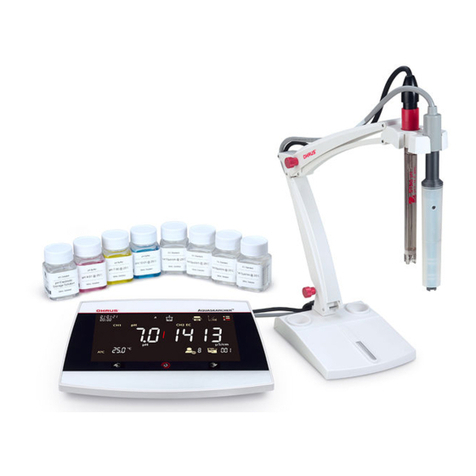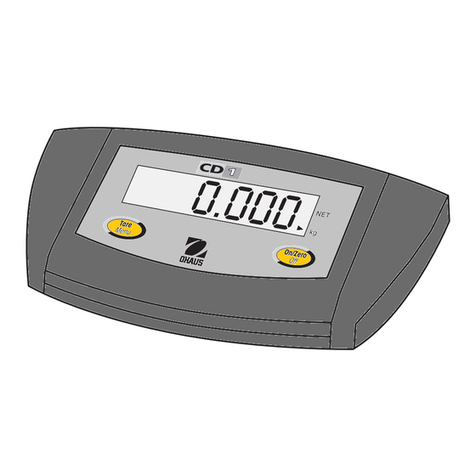
TABLE OF CONTENTS
Ohaus Corporation www.ohaus.com 1 7000 Series T72XW Indicators Service Manual
CHAPTER 1 GETTING STARTED Page No.
1.1 Introduction..............................................................................................................1-1
1.2 Service Facilities......................................................................................................1-1
1.3 Tools and Test Equipment Required........................................................................1-2
1.3.1 Special Tools and Test Equipment List.............................................................1-2
1.3.2 Standard Tools and Test Equipment List ..........................................................1-2
1.4 T72XW Physical Dimensions ...................................................................................1-2
1.5 Specifications...........................................................................................................1-4
1.6 Main Board Wiring Connections...............................................................................1-5
1.6.1 Analogue Load Cell Connection........................................................................1-5
1.6.2 COM1 Serial Port Connection...........................................................................1-7
1.6.3 PCB Switch Setting...........................................................................................1-8
1.6.4 SD Card Installation..........................................................................................1-9
1.7 Overview of the Controls........................................................................................1-10
1.7.1 Display and Keyboard.....................................................................................1-10
1.7.2 Display Layout ................................................................................................1-10
1.7.3 Front Panel Key..............................................................................................1-10
1.8 Operation Terminal ................................................................................................1-11
1.8.1 Overview.........................................................................................................1-11
1.8.2 Display Elements and Keypad Operation........................................................1-11
1.8.3 Display Elements............................................................................................1-11
1.8.4 Keypad Operation...........................................................................................1-13
1.8.5 Language Selection........................................................................................1-16
1.8.6 Configuration ..................................................................................................1-16
1.9 Calibration..............................................................................................................1-17
1.9.1 GEO Code......................................................................................................1-17
1.9.2 Set Zero..........................................................................................................1-19
1.9.3 Set Span.........................................................................................................1-19
1.9.4 Analogue Saturation Test................................................................................1-20
1.10 Communication......................................................................................................1-20
1.10.1 Serial ..............................................................................................................1-21
1.10.2 COM1.............................................................................................................1-21
1.10.3 Baud...............................................................................................................1-21
1.10.4 Data................................................................................................................1-21
1.10.5 Parity..............................................................................................................1-21
1.10.6 Flow Control...................................................................................................1-21
1.10.7 COM2/USB......................................................................................................1-23
1.10.8 Baud................................................................................................................1-23
1.10.9 Data Bits..........................................................................................................1-23
1.10.10 Parity.............................................................................................................1-23
1.10.11 Flow Control ..................................................................................................1-23
1.10.12 Interface ........................................................................................................1-23
1.10.13 Network.........................................................................................................1-24
1.10.14 Ethernet.........................................................................................................1-24
1.10.15 MAC Address ................................................................................................1-24
1.10.16 DHCP Address..............................................................................................1-24
1.10.17 IP Address.....................................................................................................1-24
1.10.18 Gateway Address..........................................................................................1-24
1.10.19 Print Client.....................................................................................................1-25
1.10.20 Server IP Address .........................................................................................1-25
1.10.21 Server TCP Port............................................................................................1-25






